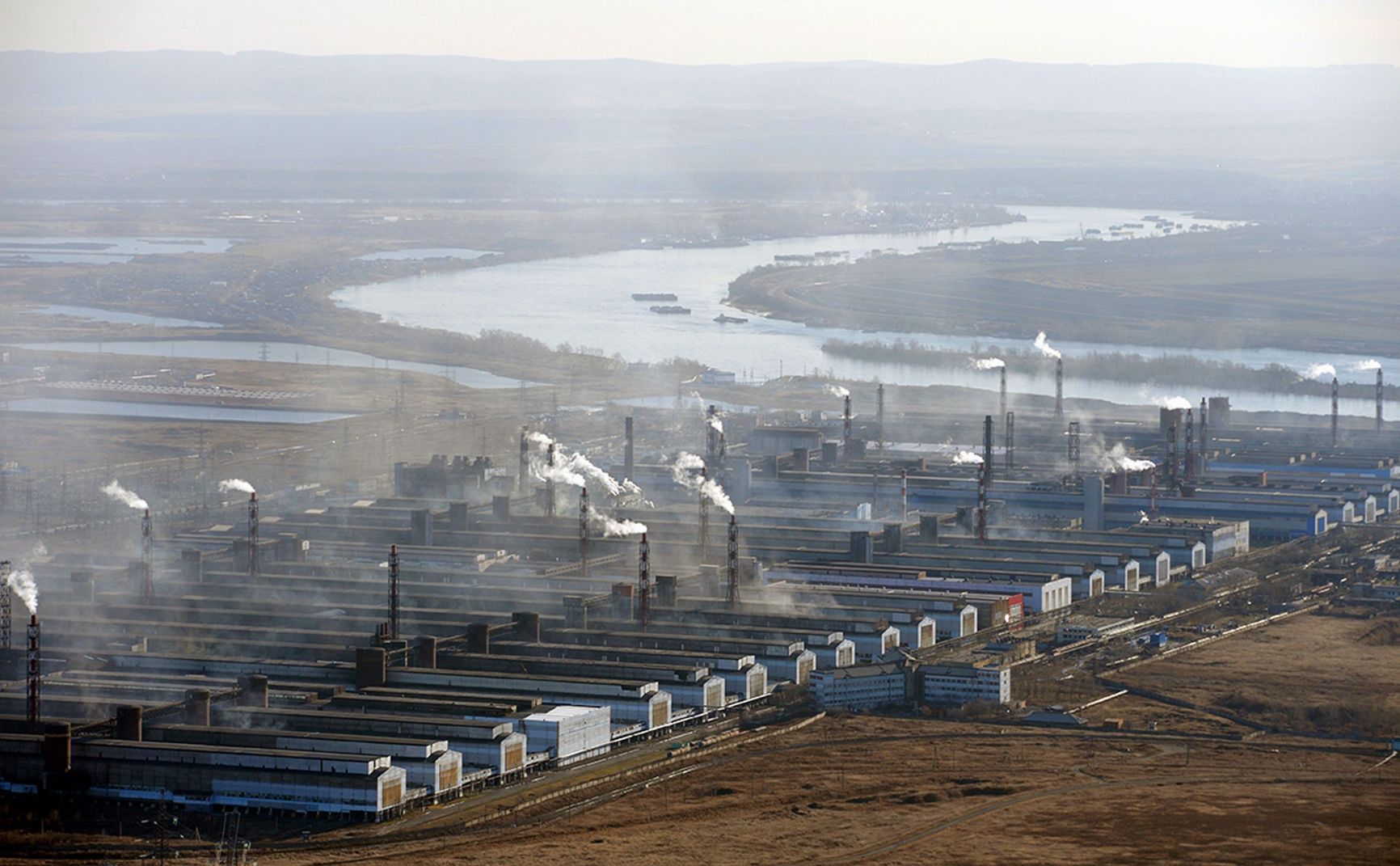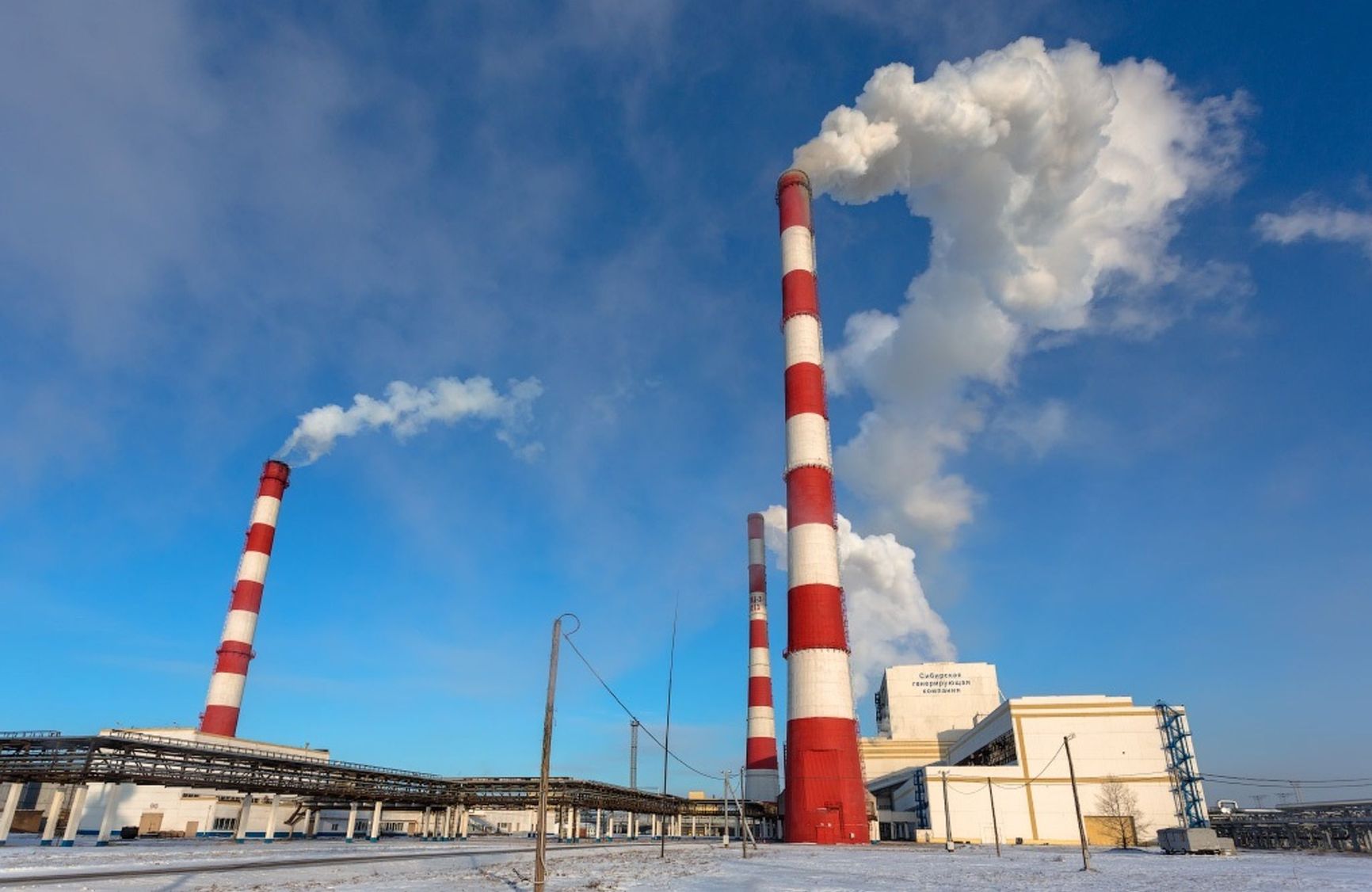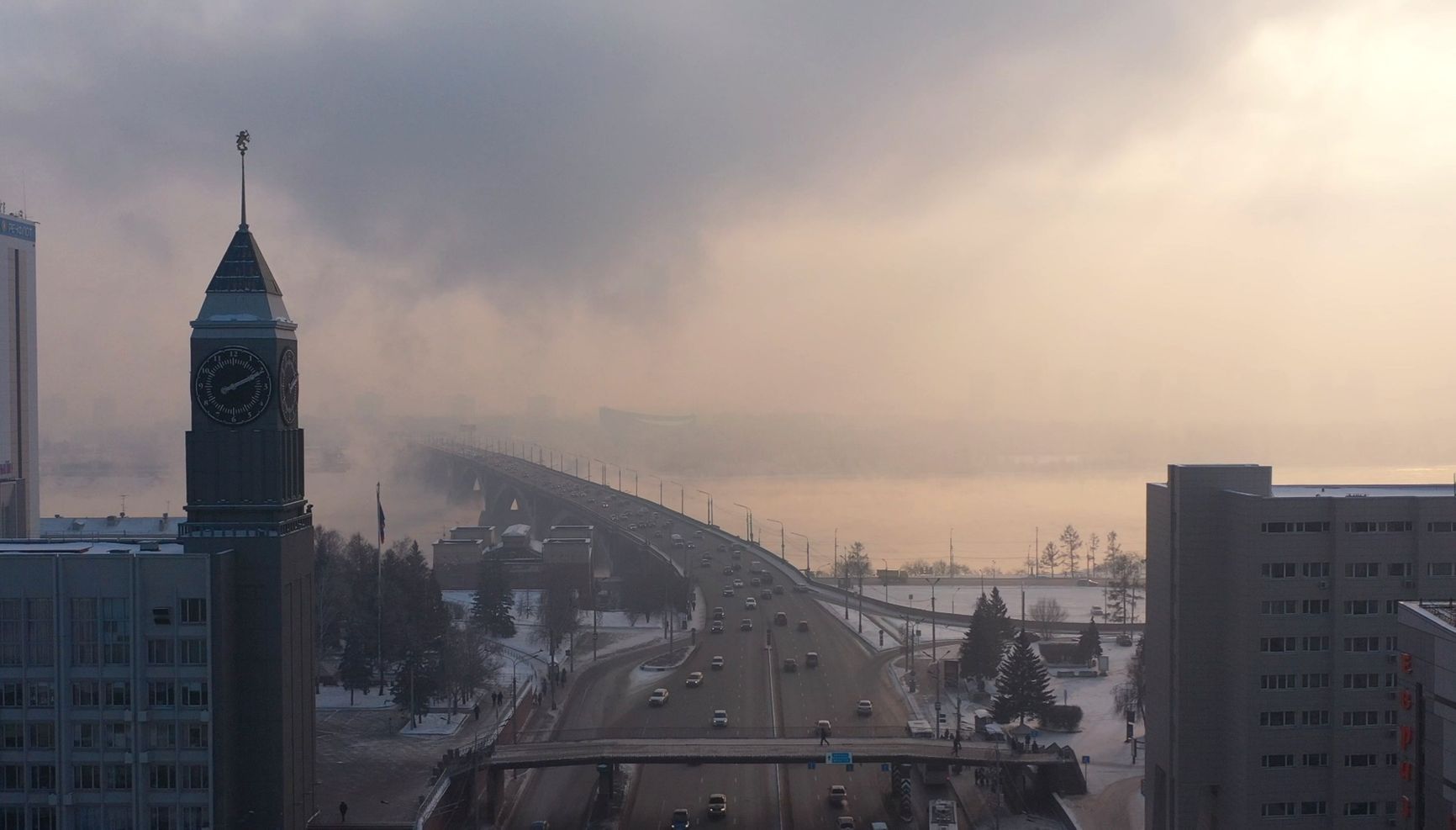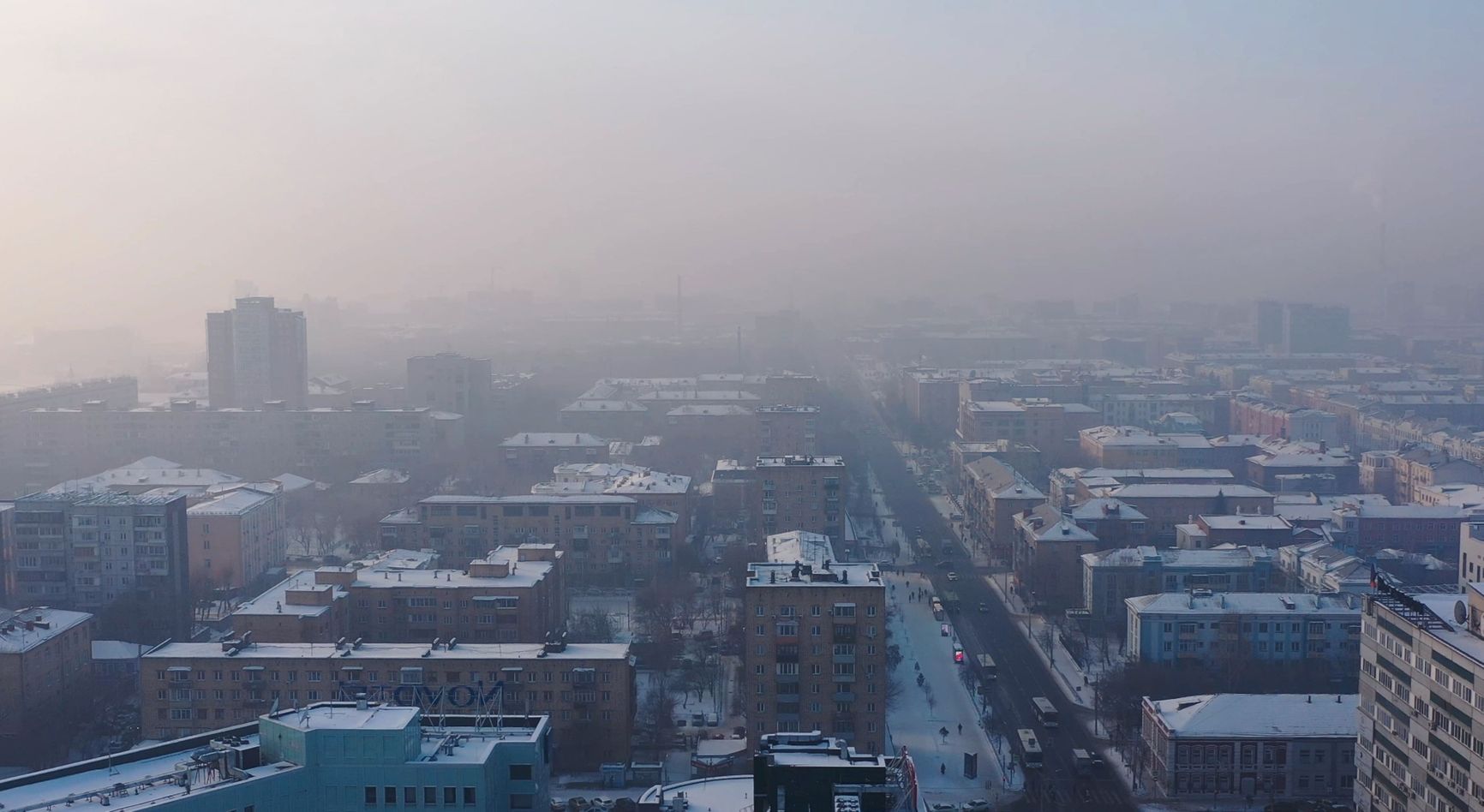

On January 20, a state of “unsafe meteorological conditions” — colloquially referred to as a “black sky alert” — was declared in Krasnoyarsk, Russia’s eighth largest city (pop. 1.1 million) and the second biggest in Siberia. The city was shrouded in thick smog for 4 days, and, due to high concentrations of harmful substances in the air, the sun was rendered completely invisible in some neighborhoods. The main sources of pollution are industrial enterprises and coal-fired power plants. Despite promises to clean up the environment, authorities are doing almost nothing to reduce emissions, instead blaming the smog problem on cars. Despite the grim ecological circumstances, the city is still not equipped with a proper air quality monitoring system, as sanctions have rendered the purchase of the necessary equipment and chemical reagents impossible. The artificially thick air is affecting the health of Krasnoyarsk residents.
Content
What is the “Black Sky Alert”
Hidden toxins
Harmful coal
Bad geography
Sanctions harm monitoring
“I have never been allergic, but it got to the point where I simply couldn't breathe”
Fixing the situation
What is the “Black Sky Alert”
The concept of a “black sky alert” was first introduced during the “great smog” in London in 1952. Back then, cold and windless weather brought about by an anticyclone allowed pollutants — mainly coal-derived — to accumulate over the city, forming a thick layer of smog. This marked the first documented catastrophic air pollution event in history, and just as in Krasnoyarsk, it was accompanied by widespread negative health effects for the local population.
Unlike in London, however, in Krasnoyarsk the black sky alert has become a regular occurrence. “Every year we experience no less than 60 days of ‘unfavorable meteorological conditions,’” Sergey Mikhailyuta, the head of projects at the city’s Association of Environmental Investigations, told The Insider. On smog days, the Ministry of Emergency Situations, the Russian equivalent of America’s Federal Emergency Management Agency (FEMA), recommends that people stay indoors and try not to open any windows. In reality though, life in the city continues on as usual.
Despite the frequency of “black skies,” it is impossible to truly adapt to this environmental catastrophe. The focus on environmental issues intensified in the city in 2017, when cleaning up the sky became a key issue in local election campaigns. Public opinion leaders and other local activists joined forces in an attempt to address the problem — but without apparent success.
Hidden toxins
The majority of atmospheric emissions in Krasnoyarsk are attributable to industrial enterprises and thermal power plants. Regulating these entities, however, is easier promised than done.

Krasnoyarsk Aluminum Plant (KrAZ)
“Today, the scales are tipped in favor of industrial enterprises, and they act as they please, implementing emission inventory methodologies that suit them,” Mikhailyuta told The Insider. “They have an excellent tactic — blaming pollution on other factors, such as exhaust from automobiles. This enables them to sidestep the management of their industrial emissions, a task that would necessitate the installation of costly equipment. Instead, they continue to derive profits from the situation.”
According to official data from the city administration, 43% of smog-inducing emissions come from vehicles. Older model cars’ exhaust contains benzopyrene, a first-class carcinogenic polycyclic aromatic hydrocarbon that is often cited as being among the most dangerous pollutants filling Krasnoyarsk’s dark skies. Former Governor of the Krasnoyarsk Krai, Alexander Uss, insisted that personal cars, not large-scale industrial enterprises, are primarily responsible for putting benzopyrene into Krasnoyarsk’s air. However, an ecologist argues that vehicle emissions are not the main contributor:
“Look at Euro-4 standards; there's no benzopyrene, no hydrocarbons at all. We shouldn't forget about this — at this point in time everyone has relatively new cars. By employing questionable emission calculation methods, the authorities inflate the number of cars to explain thousands of tons of emissions. But their official results are simply impossible; it's just manipulation. The real impact of automotive transport is not as significant as described.”
According to the ecologist, lobbyists for industrial companies are working to change legislation in order to make it even easier to harm the environment with impunity. Often, to reduce the officially recorded volume of hazardous substances, enterprises simply generalize specific data on paper. “For example, the substance called kerosene is, in reality, a mixture of complex hydrocarbons. It's a third-class hazardous kerosene, but inside, there may be first-class hazardous carcinogens. In the new version of hygienic standards, divinyl was classified as a fourth-class substance, while in reality, it's a neurotoxic carcinogen causing bone marrow damage. This is a serious environmental violation.”
Still, progress has been made in at least one notable instance. In 2020, the head of Rosprirodnadzor (the portmanteau denoting Russia’s Federal Service for Supervision of Natural Resources), Svetlana Radionova, stated that her department had “caught red-handed” Krasnoyarsk enterprises that were understating their volumes of harmful emissions. In one instance, the actual concentration of benzopyrene in the air near the KrAZ aluminum smelter was six times above permissible levels. The plant’s owner, oligarch Oleg Deripaska’s aluminum giant RUSAL, promised to reduce carcinogenic emissions by 60% by 2024, and as of the beginning of this year, the volume of emissions really had been significantly decreased. According to a plant overhaul plan developed by KrAZ, by 2028 benzopyrene emissions will be reduced by 54%, fluorine gas emissions by 43%, solid fluorides by 40%, and sulfur by 12%.
But KrAZ is only one of the many sources of pollution darkening Krasnyarsk’s sky.
Harmful coal
Another source of air pollution in Krasnoyarsk is coal-based power generation at thermal power plants, of which there are three in the city. Krasnoyarsk is the only city in Russia with a population of over one million residents where heating is generated from coal. Despite abundant gas reserves in Siberia, no gas pipeline has been connected to Krasnoyarsk. And while factories attempt to reduce their contributions to the local air pollution problem, no serious improvements are expected from the thermal power plants.
One of the reasons is the coal itself. The Krasnoyarsk plants burn brown — also known as bituminous — coal, which contains only around 70% carbon — the rest being impurities. When burned, this type of coal releases a significant amount of highly hazardous substances, including uranium, mercury, arsenic, and carcinogenic polycyclic aromatic hydrocarbons. “In developed thermal power generation, it is customary to enrich brown coal, removing impurities,” the ecologist explains. “But in Russia, brown coal is not enriched, as that is considered too expensive. Unfortunately, power plants are only interested in energy production and economic efficiency, and they disregard the environmental aspect.”
When brown coal is burned, it releases uranium, mercury, arsenic, and carcinogenic polycyclic aromatic hydrocarbons into the air
As with industrial enterprises, thermal power plants profit from not purifying their emissions to safe levels. Sergey Shakhmatov, Deputy Chairman of the Green Party, told The Insider why he sees them as being so critical to the problem: “The authorities talk about emission volumes, but we believe it is essential to consider not only the volumes and their composition, but also the patterns of dispersion over the areas where people live. We conducted a study on the impact of industrial and energy facilities in terms of dispersion and found that thermal power plants make a more significant contribution.”

Thermal Power Plant 3
Regional level authorities in and around Krasnoyarsk have attempted to promote smokeless coal, a more environmentally friendly option. However, this type of fuel cannot be used in the types of thermal power plants currently operating in the city. Implementing the improvement would require a costly technological upgrade, and the cost to businesses of continuing to pollute remains greater than any potential financial rewards available from cleaning up their act.
Without alternatives, the city's dependence on thermal power plants will continue. Krasnoyarsk’s only hydroelectric power plant sends approximately 2/3 of the electricity it produces to the local RUSAL plant, but even as representatives of the aluminum company have publicly expressed their readiness to share excess electricity directly from KrAZ, power grid operators and bureaucratic red tape have not allow them to do so — that, and the fact that the local population is hardly ready to pay double their accustomed rate in order to consume ecologically-friendly electricity, mean that coal remains the only power source in town.
Bad geography
The geographical location of Krasnoyarsk also plays a significant role in the “black skies” situation. The city is situated directly in a basin surrounded by the ridges of the Sayan Mountains. Additionally, due to the Yenisei River, which remains unfrozen throughout the year, the lower atmospheric environment experiences poor ventilation. “It's physics — and there's no escaping that,” the expert Mikhailyuta explains.

Photo by The Insider
Sanctions harm monitoring
A shortage of scientific equipment — the result of international sanctions against Russia — is also contributing to the problem. Global monitoring standardization centers that develop analytical methods for detecting various pollutants in the air and in industrial emissions exist, and Russia has always been part of this global system, but since 2022 conducting tests has become much more expensive for Russia under its new economic circumstances. As a result, measuring just one concentration of mercury in the emissions of a thermal power plant can cost between $25,000 and $30,000.
Of course, some testing is still being conducted, and when air pollution thresholds are exceeded, alerts often appear in Telegram channels and on official websites of regional governments. However, specialists warn that collected data on benzopyrene, formaldehyde, and other hazardous substances may not all be making its way into the public domain. “When I directly ask specialists why this information is not available, they say they don't want to upset the population,” the ecologist says. “What kind of excuse is this? If there is a violation of established norms, it is an environmental offense, punishable under Article 251 of the Criminal Code of the Russian Federation. There should be an investigation, and all those responsible should be punished. This is how the ministry and all related government agencies should operate.”
Coming to the aid of the residents of Krasnoyarsk are activists from the Krasnoyarsk.Sky project, equipped with their own, private monitoring system. When the group detects a dangerous concentration of carbon dioxide or carbon monoxide, they, at least, reliably alert the public.
“I have never been allergic, but it got to the point where I simply couldn't breathe”
Whether they are warned about the situation or not, the public is certainly feeling the effects of Krasnoyarsk’s polluted air. Krasnoyarsk ranks second among Siberian cities, according to data presented by the Russian Academy of Sciences (RAS) in 2021, Krasnoyarsk ranks second among Siberian cities when it comes to the frequency of environmentally related diseases. However, the recording of the meeting of the Siberian branch of the RAS, where this information was disclosed, was deleted from YouTube in March of that year. During that meeting, the director of the Institute of Atmospheric Optics of the Siberian Branch of the RAS, Igor Ptashnik, noted that in 14 out of 15 Siberian cities with high levels of airborne toxins, the primary pollutant was benzopyrene, a “very potent carcinogen.”
Most people interviewed by The Insider complain of coughing, shortness of breath, nasal congestion, and nausea.
“It's impossible to walk without a mask,” said Denis, a resident of Krasnoyarsk. “If you climb a hill, you'll see smoke rising in the evening, and everything is shrouded in a haze. You go out without a mask, take two breaths, and immediately start coughing.”
“A severe cough starts after being outside for just 10 minutes,” Kristina complains. “Every day, the whole family feels sick, and we have headaches. Opening windows is impossible; everything immediately turns black, and we have no fresh air at all.”
“I never had allergies, but of course, allergies can occur due to cumulative effects. At first I thought it was seasonal,” Ekaterina complains, “but the symptoms kept worsening to the point where I simply couldn't breathe. I had to buy an inhaler, and now I always carry it with me. Without it, I choke with coughing, can't inhale or exhale. Last autumn, we left Krasnoyarsk for the Kaliningrad region for 4 months, I forgot about the inhaler, finally started breathing normally. But we had to return, and, of course, my allergy returned.”
“Now I'm pregnant, I need walks in the fresh air, but for many years now, clean air for us is just a dream,” says Olga. “It's impossible to open windows or go outside. A pregnant woman simply needs to walk for her health and the health of the baby. Oxygen deficiency leads to fetal hypoxia, resulting in a miscarriage.”
“When I was pregnant with the second child, he hiccupped in my stomach throughout the second half of the pregnancy. Towards the end, I was taken to the hospital. One artery had stopped supplying oxygen. But it wasn't pinched. I blame the environment for everything. We plan to leave. There is no more hope,” Oksana complains.
Residents of Krasnoyarsk attribute various illnesses to the unfavorable environmental situation in the city.
“In September, my whole body went numb,” Anastasia says. “I didn't understand what was happening, and I immediately went to the doctor. By the end of December, after all the examinations, I was diagnosed with multiple sclerosis. There are over 1000 people with this disease in our city. It's caused by several factors, and one of them is environmental pollution. Multiple sclerosis is the damage to the nerve sheaths in the spinal cord and brain, leading to disruptions in many bodily functions. Without proper treatment, it can lead to disability. Upon learning about such a terrible diagnosis, I simply hated this city. It seems there are no healthy people left. The only thought in my head is to run away from here.”

But the most concerning issue for residents of the Krasnoyarsk region is the recent increase in cancer cases. Over the past 10 years, the number of cancer patients in the area has risen by 25%. Currently, between 12,000 and 13,000 new cases of malignant neoplasms are detected every year, and the number of patients increases by 3% annually.
“My son died of cancer; he was 8 years old,” Artem shares. “He got sick at 5, and we fought for more than three years. Now we have a newborn daughter, and we want to leave here — far away and forever. Childhood oncology is growing, as is mortality. Go to any oncology center in Moscow and ask if anyone is from the Krasnoyarsk region — you will be surprised, someone will surely be found. Our air is to blame for everything. We have nothing to breathe. Benzopyrene is off the charts. Babies are born with leukemia — a Krasnoyarsk Health Ministry employee somehow let slip about it.”
“The issue of oncological diseases is very acute,” says Irina, a resident of Krasnoyarsk. “My father, after moving from another city to Krasnoyarsk, received a diagnosis of stage three, inoperable cancer two years later. After three years of fighting, he unfortunately died. And our new cancer center didn't help at all. Now my mother-in-law is also undergoing treatment for stage three cancer. They removed her breast.”
Currently, the unresolved issues include a lack of oncologists, insufficient diagnostic equipment, and the absence of endoscopic equipment, CT, and MRI scanners in certain areas. All this leads to a high workload that still cannot allow for timely assistance to be provided to everyone in need. The situation could improve in 2024, with the potential opening of a large endoscopic center at the Regional Clinical Hospital.
Fixing the situation
Elected in 2023, the new Krasnoyarsk regional governor Mikhail Kotyukov regularly comments on the environmental situation. He has promised to improve air quality — and also to expedite the gasification of the region. However, progress is slow, and the public appears increasingly tired of talking. When Kotyukov promised to hold a meeting of the public-expert council on ecology on January 25 to “discuss the situation,” Krasnoyarsk residents responded on Telegram by requesting that Kotyukov instead take action.
As was mentioned above, some Krasnoyarsk residents are beginning to take matters into their own hands. Krasnoyarsk resident Igor Shpekt, creator of the Krasnoyarsk.Sky project, told The Insider about his experience working with the local powers-that-be: “We had different relations with the authorities. For a while, they targeted me by conducting a prosecutor's check of our project; they tried to sue me. But it didn't lead to anything because the project is entirely transparent. At the moment, our relationship can be called absolutely neutral. Moreover, the authorities try to ignore the problem as much as possible.”
Thanks to the help of the Krasnoyarsk.Sky project, many local residents have even started installing air pollution sensors in their homes. Often, their readings are literally off the scale.

Air pollution sensor
The Krasnoyarsk.Sky project also created a mobile app that displays data for each device installed in the city. “First and foremost, our project aims to make environmental data as accessible as possible for everyone,” Shpekt explained. “A few years ago, such data were semi-classified. Now our system is designed in a way that the more it grows, the more effective it becomes. Thanks to inexpensive devices and the automated system itself, we can install many more monitoring stations than the government service can afford, and this allows us to identify pollution sources faster.”
Still, as the environmental supervision agency expert Mikhailyuta warns, when the high alert warnings in the city are lifted, it does not mean the air has become clean: “During the high alert period, two layers of pollution often form over the city: one is near the ground, saturated with emissions from vehicles and low sources of pollution, and the other is located higher, at 300–600 meters, where emissions from tall chimneys can accumulate. This separation is due to vertical exchange; convection is reduced, there is no mixing, but sooner or later, the mixing layer develops, and everything that has accumulated above is thrown into the lower layer. This is usually how high alert periods end. Such an injection can increase concentrations by another 30 times,” he said.
To truly rectify the situation, ecologists say it is necessary to significantly reduce the emissions of harmful substances coming from industrial plants and power stations. In addition, a proper monitoring system is needed, and its findings must be disclosed to the public.

Photo by The Insider
“The basic principles of managing air quality in urban areas are being violated,” Mikhailyuta says. “These are fundamental principles, but their implementation entails expenses for industrialists, and therefore, there are no effective air purification methods. If we could force enterprises, for example, to reduce emissions by 50% at least 12 hours prior to the declaration of high alert, the situation would be quite different. Forecasts come true in approximately 60% of cases. In any event, the health and safety of humans should be a top priority, independent of money or someone's interests. Instead of expensive private lawyers, we need functioning government bodies, deputies, ministers, and governors to protect the rights of the population. They should hold industrialists who have forgotten about their responsibility accountable.”